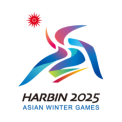


Sports
Gymnastics
Gymnastics
Gymnastics is a sport involving performance of exercises requiring physical strength, flexibility, agility and coordination.
Artistic Gymnastics typically involves the women's events of uneven parallel bars, balance beam, floor exercise, and vault.
Men's events include high bar, parallel bars, still rings, floor exercise, vault, and pommel horse. Other forms of gymnastics are rhythmic gymnastics, various trampolining sports, and aerobic and acrobatic gymnastics.
Gymnastics was first incorporated into the Asian Games in 1978.
List of disciplines
- Aerobic
- Artistic Gymnastics
- Gymnastics
- Rhythmic Gymnastics
- Trampoline
Aerobic means "with oxygen", and refers to the use of oxygen in the body's metabolic or process. Aerobics is a repetitive, rhythmical exercise involving large muscle groups. Aerobic exercise increases the body's demands for oxygen and adds to the workload of the heart and lungs, strengthening the cardiovascular system and helping to develop endurance.
Many types of exercise are aerobic, and by definition are performed at moderate levels of intensity for extended periods of time. Aerobics was first incorporated into the Asian Indoor Games in 2005.
When gymnastics began in ancient Greece more than 2000 years ago, the gymnasium was the centre of cultural activity. Men gathered there not only to practise sport, but to understand art, music and philosophy.
The Greeks believed symmetry between the mind and body was possible only when physical exercise was coupled with intellectual activity.
Today, gymnastics is often termed the ultimate combination of sport and art, but the idea is nothing new.
Plato, Aristotle and Homer heartily advocated the strengthening qualities of gymnastic activity. It is a philosophy that can be found in much of their work.
The term "artistic gymnastics" emerged in the early 1800s to distinguish free-flowing styles from the techniques used by the military.
Although viewed as a novelty by many, gymnastics competitions began to flourish in schools, athletic clubs and various organisations across Europe in the 1880s. When the Olympic movement was resurrected at Athens in 1896, gymnastics made a fitting return.
List of events
-
men
-
VAULT
-
POMMEL HORSE
-
RINGS
-
PARALLEL BARS
-
HORIZONTAL BAR
-
QUALIFICATIONS
-
FLOOR EXERCISE
-
INDIVIDUAL ALL-ROUND
-
FLOOR
-
TEAM
-
-
women
-
FLOOR
-
TEAM
-
INDIVIDUAL ALL-ROUND
-
VAULT
-
UNEVEN BARS
-
BALANCE BEAM
-
QUALIFICATIONS
-
FLOOR EXERCISE
-
BEAM
-
Gymnastics is an ancient sport which was practised in various forms in ancient Greece and Rome. Gymnastics competitions are, however, relatively modern. The modern development of gymnastics began in the mid-19th century in Europe. Gymnastics societies were formed in Germany (Turnvereins) and the Bohemian part of the Austro-Hungarian Empire (Sokols).
Similar societies formed in France and Switzerland and then spread generally throughout Europe. In 1881, the Fédération Internationale de Gymnastique (FIG) was formed to organise competitions
Modern competitive gymnastics has developed from two systems: the German turnverein system that emphasised muscular development and apparatus work of a formal nature, and the Swedish system of free exercises that focused on developing rhythmic
When gymnastics began in ancient Greece more than 2000 years ago, the gymnasium was the centre of cultural activity. Men gathered there not only to practise sport, but to understand art, music and philosophy. The Greeks believed symmetry between the mind and body was possible only when physical exercise was coupled with intellectual activity.
Today, gymnastics is often termed the ultimate combination of sport and art, but the idea is nothing new.
Plato, Aristotle and Homer heartily advocated the strengthening qualities of gymnastic activity. It is a philosophy that can be found in much of their work.
The term "artistic gymnastics" emerged in the early 1800s to distinguish free-flowing styles from the techniques used by the military.
Although viewed as a novelty by many, gymnastics competitions began to flourish in schools, athletic clubs and various organisations across Europe in the 1880s. When the Olympic movement was resurrected at Athens in 1896, gymnastics made a fitting return.
List of events
-
women
-
TEAM ALL-AROUND
-
TEAM
-
INDIVIDUAL ALL-ROUND
-
Trampolining is a competitive sport in which gymnasts perform acrobatics while bouncing on a trampoline. These can include simple jumps in the pike, tuck or straddle position to more complex combinations of forward or backward somersaults and twists.
There are two related competitive rebound sports: synchronised trampoline and double mini-trampoline (DMT).
Trampolining today is mostly conducted in specialist gyms with certified trainers.
List of events
-
men
-
INDIVIDUAL
-
-
women
-
INDIVIDUAL
-
Related links
Sports Committee
The Sports Committee shall consist of one Chairman and a minimum of five members. The Chairman, nominated by his NOC, will be elected by the GA, while the Members preferably representing the 5 zone...
Sports and Environment Committee
The Sports and Environment Committee shall consist of One Chairman and Five Members. The Chairman, nominated by his NOC, will be elected by the GA, while the Members preferably representing the 5 z...
Sports for All Committee
The Sports for All Committee shall consist of One Chairman and Five Members. The Chairman, nominated by his NOC, will be elected by the GA, while the Members preferably representing the 5 zones of ...
Sports Federations
-

Asian Federation
Asian Gymnastics Union
-

International Federation
International Gymnastics Federation

